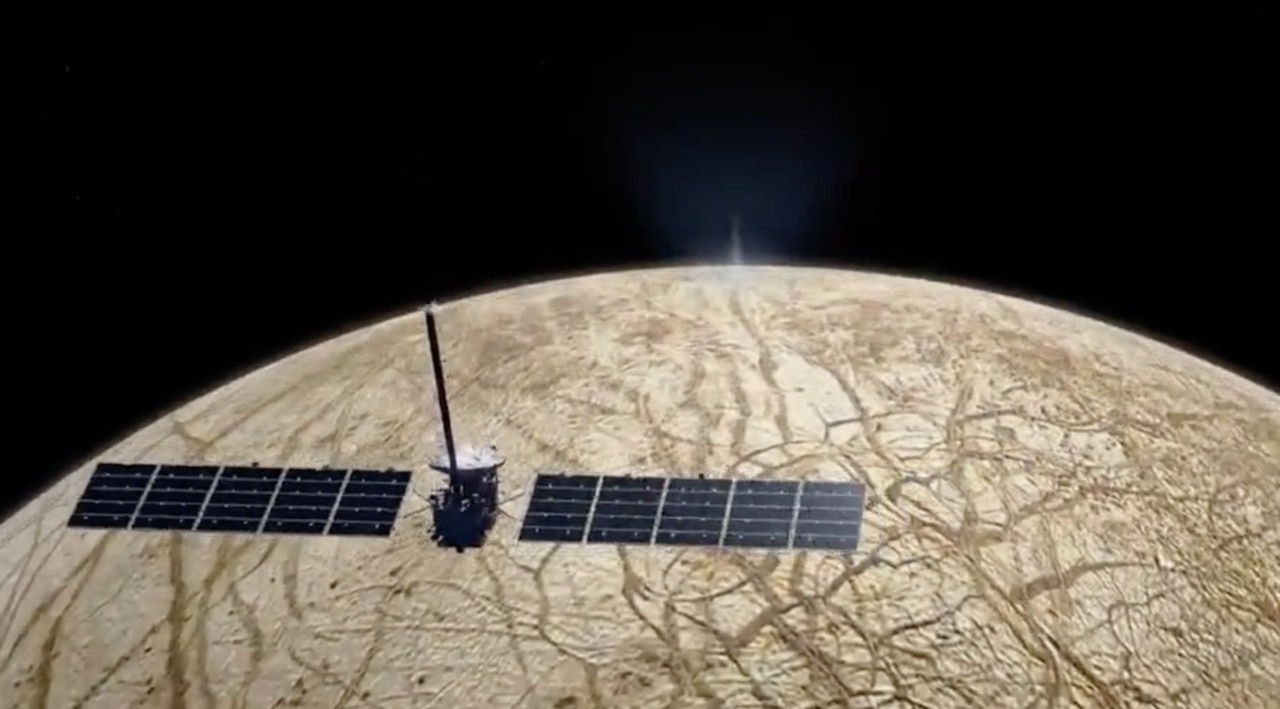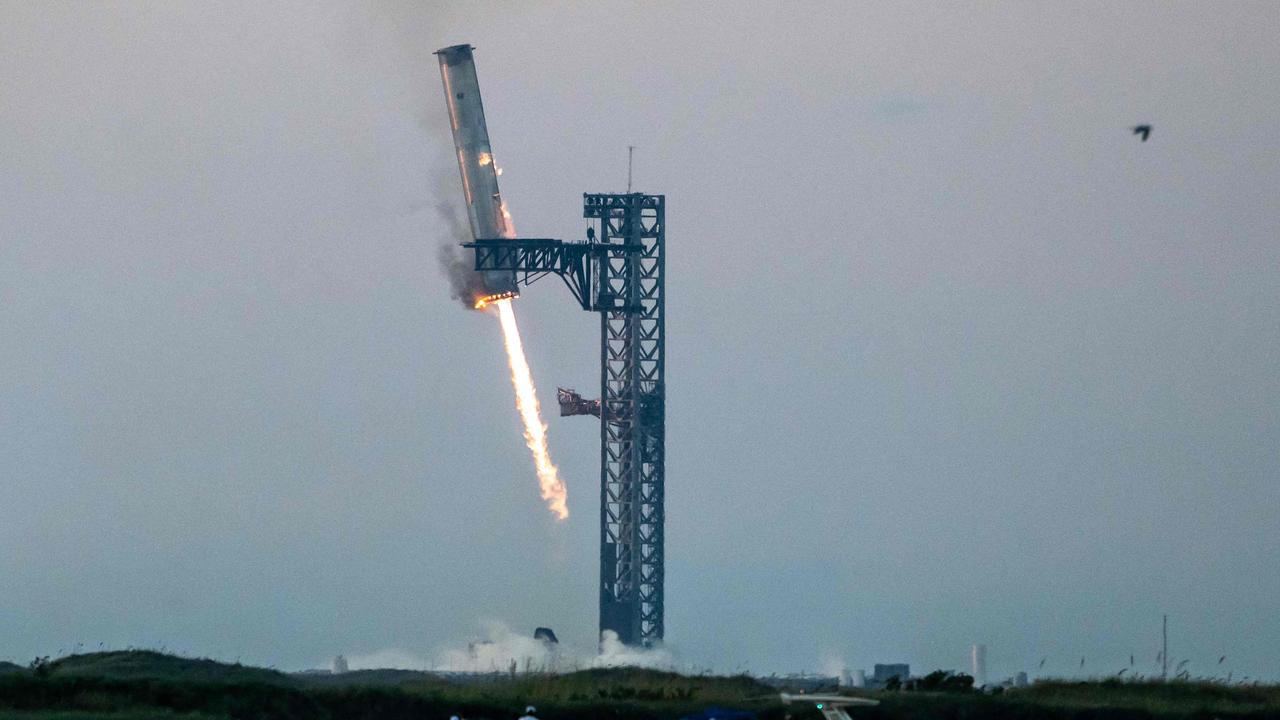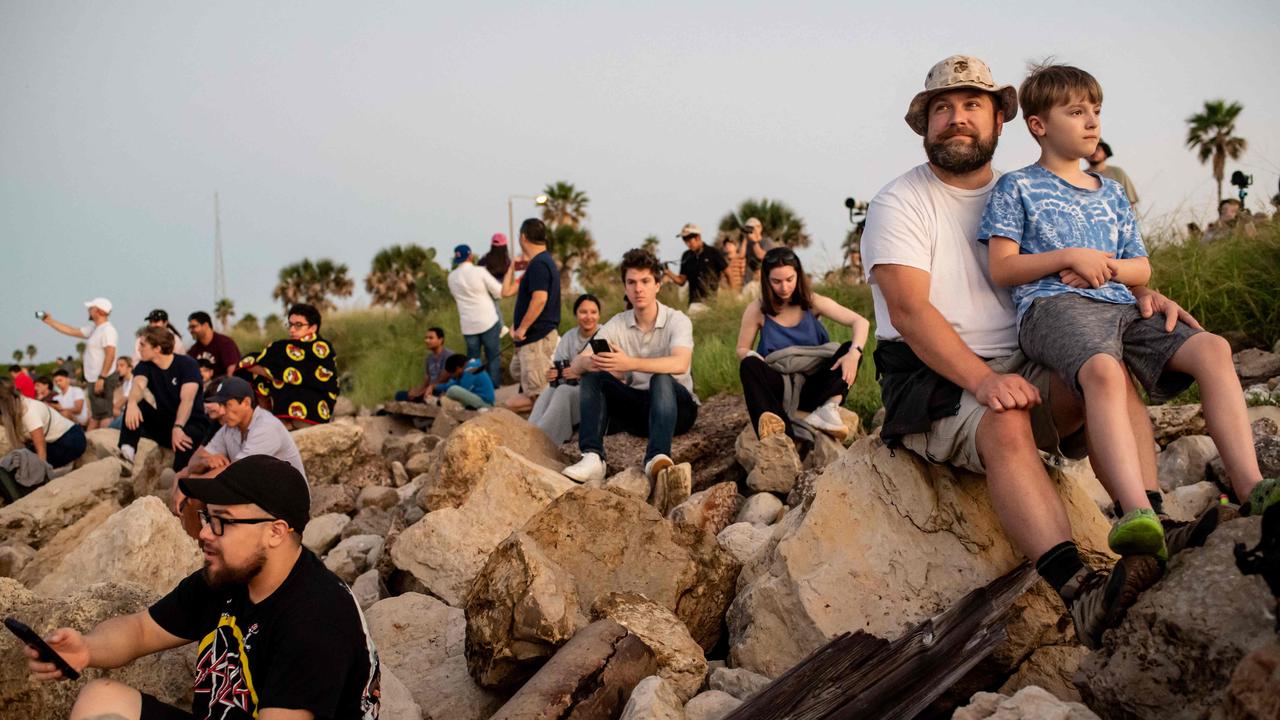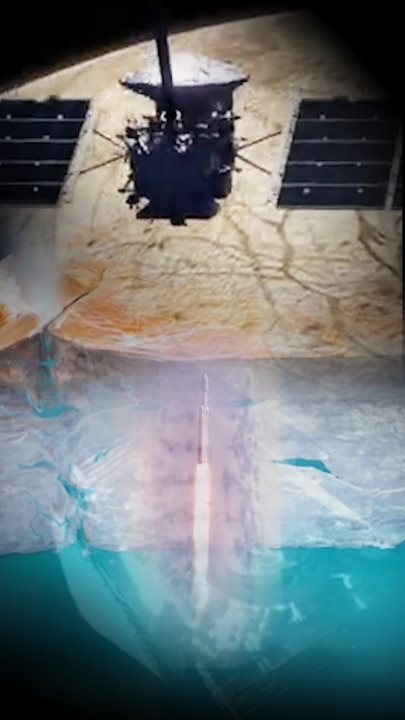NASA embarks on journey to Jupiter’s icy moon Europa
NASA has embarked on a 2.8 billion km journey to Europa to see if life could be sustained on the mysterious icy moon, which has twice the amount of water as Earth’s ocean under its icy shell

READING LEVEL: GREEN
A spacecraft has blasted off on a mission to search for signs of life on one of Jupiter’s icy moons.
NASA’s Europa Clipper has embarked on a journey of 2.8 billion km to reach Europa, a mysterious moon orbiting Jupiter.
And although it won’t arrive until 2030, it will serve as NASA’s first spacecraft dedicated to studying an ice-covered ocean world in our solar system. NASA also hopes to study whether the moon could be habitable* for life as we know it.
“This is the start of our journey of discovery,” NASA Jet Propulsion Laboratory science systems engineer Jenny Kampmeier said. “Everything we’re going to learn from Europa, it’s just amazing.

“All scientific disciplines* can really gain something from this, and it’s going to change our understanding of our place in the universe, if this is a world that could support life.”
The spacecraft will carry nine instruments and a gravity experiment to investigate the ocean beneath Europa’s thick ice shell. The moon’s ocean is estimated to contain twice as much liquid water as Earth’s oceans.
“The instruments work together hand-in-hand to answer our most pressing questions about Europa,” the mission’s project scientist Robert Pappalardo said in a statement.
“We will learn what makes Europa tick, from its core* and rocky interior* to its ocean and ice shell* to its very thin atmosphere* and the surrounding space environment.”
The launch came one day after SpaceX launched its fifth Starship test flight from Texas and returned the rocket’s booster* to land for the first time.

SpaceX has been busily testing its innovative* rocket system, which is designed to propel a spacecraft into space before returning and reattaching to its launch pad.
The test launch saw the “super heavy booster” blast-off with the uncrewed Starship rocket before successfully detaching and making a controlled return to the launch pad, where a pair of huge mechanical “chopsticks” reached out from the launch tower to catch it, according to a livestream from SpaceX.
Not long afterwards, the upper stage of Starship splashed down, as planned, in the Indian Ocean.
“Ship landed precisely on target!” SpaceX founder Elon Musk said of the vehicle’s fifth test flight. “Second of the two objectives achieved.”
The successful “catching” of the booster at its Texas launch pad had company staffers cheering.

“Folks, this is a day for the engineering history books,” a SpaceX spokesman said on the company’s livestream.
During its last flight in June, SpaceX achieved its first successful splashdown with Starship, a prototype* spaceship that Musk hopes will one day carry humans to Mars.
It is understood that NASA will use a modified* version of Starship to act as a lander vehicle* for crewed flights to the Moon under the Artemis program* later this decade.
SpaceX said its engineers have “spent years preparing and months testing for the booster catch attempt.”
Teams had been monitoring very carefully during the test launch to make sure “thousands” of criteria were met both on the vehicle and at the tower before any attempt to return the booster.
If anything had gone wrong during the launch, the booster would have been redirected for a splashdown in the nearby Gulf of Mexico.
Instead, having been given the green light, the returning booster slowed down from its supersonic* speeds and the powerful “chopstick arms” embraced it for a successful landing.
The large mechanical arms, called “Mechazilla” by Musk, have created great excitement among space enthusiasts.
Video posted by SpaceX showed the booster slowly descending*, its bottom wobbling slowly to and fro as some of its 33 powerful engines corrected its descent, until the arms closed gently around it and held the huge device in place above the ground.
WATCH THE VIDEO

POLL
GLOSSARY
- habitable: able to be lived on by humans, animals or other living organisms
- disciplines: fields of science
- core: the centre of a planet or moon
- interior: the layers of a planet below its surface
- shell: the outer layer of a planet
- atmosphere: a layer of gases surrounding a planet
- booster: a powerful rocket used to in the first stage of lift off
- innovative: something that breaks boundaries or sets new ways of doing things
- prototype: the first version of a machine or vehicle from which other versions are built off
- modified: changed or altered
- lander vehicle: a spacecraft than descends towards and then comes to rest on the surface of a planet or other astrological body other than earth
- Artemis program: a NASA program that aims to send humans back to the moon for the first time since the Apollo 17 mission in 1972
- supersonic: a speed that is even greater than sound
- descending: moving down
EXTRA READING
Aussie team to assess asteroid risk
First tourist ‘sets foot’ in space
Two astronauts stranded in space
QUICK QUIZ
1. Why is NASA exploring Jupiter’s moon Europa?
2. How far away is Europa from Earth?
3. What year is the Europa Clipper expected to arrive at the moon?
4. How much water is estimated to be under Europa’s icy shell compared to Earth’s oceans?
5. What is the name of SpaceX’s innovative rocket system that has a reusable rocket booster?
LISTEN TO THIS STORY
CLASSROOM ACTIVITIES
1. What does it look like?
Create a detailed diagram or drawing that shows what you think Europa looks like. Use information from the story to help you.
Time: allow at least 20 minutes to complete this activity
Curriculum Links: English, Science
2. Extension
Imagine that you could choose to give enough money for either the Europa Clipper OR Starship to continue their work. Which would you choose? Write detailed reasons for your choice. Use information from the story to help you.
Time: allow at least 30 minutes to complete this activity
Curriculum Links: English, Science, Personal and Social Capability
VCOP ACTIVITY
Story starter recycle
Use the article’s opener as the story starter to a narrative.
You can decide to be an astronaut on the expedition, someone back on Earth reporting on the story, a family member, or a member of the space team that is back on Earth.
“A spacecraft has blasted off on a mission to search for signs of life on one of Jupiter’s icy moons.”
Before you start, discuss with a partner:
1. What will your story be about?
2. What is your role in the story?
3. What problem will occur?
4. How will it get worst?
5. How will you finally solve it?


